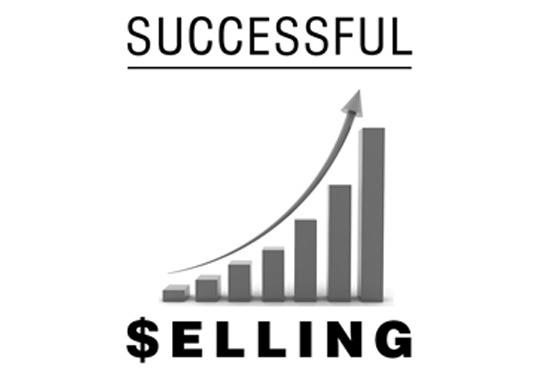Continuing from The Number 1 Skill You Need to Really Make Money Online.
1. Know who you are dealing with.
Amateurs would go on and on about how great the product is when writing the sales material, but a more enlightened salesman knows the material should be about the prospect. How do you write to and about someone you know nothing about? It’s impossible. You don’t want to risk guessing. So you do your background check (or research) on your target. Get to know both personal basic facts (demographic data) and psycho-graphic facts about him. Demographic; age, sex, education, etc. Psychographic; interest, fears, beliefs, desires, dreams, etc.
Let’s assume we’ve done our research on our prospect and we find the following;
– 88% male and 12% female
– fairly educated (between school cert and a degree)
– between the ages of 25 – 45 (average: 35)
– a middle-class worker that earns between 35,000 and 100,000 Naira (average: 65k)
– very interested in physical fitness
– afraid of bad diets that spoil the physique
– wants to be seen as charming and sexually attractive (to the opposite sex)
– crazy about big chests, flat tummies, and six-packs
You’d agree with me that this is more than enough info for knowing your target audience. Now you know who we’d be talking to and what he likes. Good job there! This leads us to the second step…
2. Make your message about him and not about you.
Now you know him, pretend you don’t exist and you want everything to be about him. One good way to really talk to your ideal prospect is to find someone that perfectly fits his description around you. Focus on that person and act like he’s before you. How would you talk to him? Now write your message in the same way. Don’t even rave about your product. Let him see you really intend to selflessly help him like it’s your life purpose. Care a great deal about him. Use words like “I’m sure you are health-conscious and you’d like to be able to carry your super-fit body confidently while walking down the street in your armless shirt, knowing the ladies are staring and going wild”. Just an example. Just always remember to answer the prospect’s question of “What’s in it for me?” (WIIFM)
3. Spell out the benefits.
Don’t go ahead and start by saying “this is a 15-minute DVD that consists of different short workouts… blah blah”. Tell him the benefits of it being a 15-minute video… and why it’s DVD. Say something like “the program is developed to perfectly suit your busy schedule so you still get a sufficient dose of daily workout in just 15 minutes. You can carry it with you anywhere you go as it’s in a DVD…” We can still do better, but you’d agree with me it now sounds more beneficial. Talk in benefits, not in features. Can you now see the need to first know what will be beneficial to your prospect?
4. Make the benefits emotional and concrete –– easy for him to imagine.
One rule of selling you should always remember is that people actually buy things for emotional reasons, not logical reasons. That’s why you’d want to buy another brand new car just a year after you bought the last one – which is still in perfect condition. If you can be armed with this knowledge, and have a series of the emotions that move people to act up your sleeves, and how to use them, you’ll get ahead of most of your business contemporaries. Some basic emotions are fear, greed, vanity, curiosity, benevolence, etc. There are over 30 more.
Paint an emotion-filled picture and let your prospect already see himself enjoying the benefits of your product; “How would you feel if you took off your shirt on the beach 3 weeks from now, and you immediately grab the attention of every single lady around and they watch you as you walk into the water, wide-eyed, wishing they could touch your abs…” This is pure vanity, but it would work wonders in the right hands.
5. Support your claims with proof or logic.
Remember people buy stuff for emotional reasons? Yes, but the emotions are not enough. Do you realize that after you get sold on a thing and desire it so much, like the new car, your left brain suddenly interrupts your daydream and you start reasoning logically? It’s then you remember you just got one barely a year ago and it’s still very good. It’s then you remember your account balance, and every other logical reason you can’t (or shouldn’t) waste your money and time on it.
As a salesperson, it’s your duty to deal with those objections – logically – before they interrupt the flow your prospect is already caught in. Before they even come up in his head. This is where you back your emotional promises with proof, data, and statistics, testimonials, endorsements, guarantees, etc. It’s where you say; “The NaijaHealth Magazine called this program the ‘turning point’ of the fitness industry and gave it a unanimous 5-star rating…” or use a testimonial that says something like “I’ve tried all forms of pills and weight-loss programs in the past to no avail, but this is different. I lost 10lbs in my first week of using it…” – Temichukwu, PH.
You see how these strengthen your copy and make your case for you?
6. Keep it simple.
Presenting a single idea in different ways backed by concrete evidence is much stronger than a string of different ideas. Don’t complicate things for your prospect. Stick to the “rule of one”. Give him one “big idea”, one “big promise”, one “call-to-action”, etc. All these can be (and should be) supported by their smaller counterparts – not the call-to-action though. You should not say “click here to order for this program” and later say “click here to like our Facebook page” in the same promo. You have to choose one – whichever is more important to you – and make it the sole action you desire from your prospect.
Studies have shown that when you give people too many options, they might end up choosing none. Unfortunately, this is another place most marketers get it wrong. And there you have it; the basic principles that make up the art of successful selling – or any form of persuasion. It isn’t about manipulation; it’s really about caring for your prospect – in order to get what you want from him. It’s win-win.
The above is just an example of how you can apply the principles of persuasion or selling. It can be applied to every area of your life – from getting a raise from your boss to persuading your spouse to do something for you, or your kid to do homework after school.
Now let’s go back to Robert Ringer. He claims knowing how to write a great, persuasive ad copy is responsible for all the successes he enjoys to date. Even though you now have the basic persuasion principles, there are proven structures and elements a sales (or ad) copy should follow. There are other principles peculiar to copywriting that stem from the basic principles. These unique copywriting techniques and structures are only to make your persuasion task easier and more effective in writing. And luckily, they are also easy to learn as long as you can understand the basic and natural principles already given.






